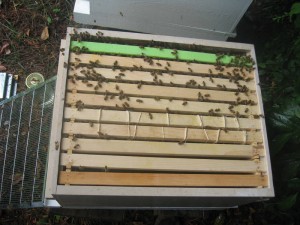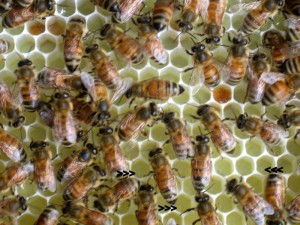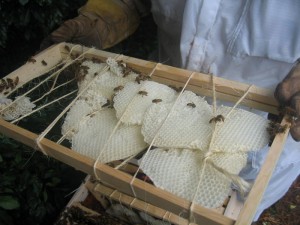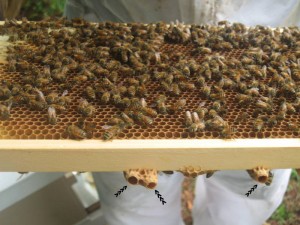Bees are coming and going from both hives. It would appear that things are going as planned.
As shown in the above photo, there are still plenty of bees in the new hive. I have removed the queen excluder/includer.
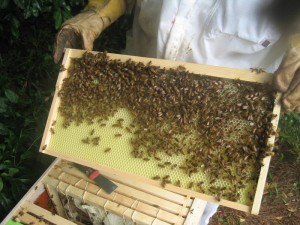
The bees are starting to “draw out” the comb, depositing their own wax, most apparent in the upper right of the frame.
Although it is possible for workers to lay eggs (which invariably result in drones, since the workers have no sperm to fertilize the eggs), a worker’s eggs are usually scattered among the frame and often adherent to the sides of the cell, unlike these eggs.
Here is the (marked) queen in the new hive – proof that it was from my original hive. Swarms generally set up a new hive at least 100 meters from the old hive, but once they are captured, they can be installed right next to the original hive without problems.
The empty queen cells in the parent hive suggest that the hive has generated a new queen. We didn’t see a queen or eggs in this hive, but Dr. Hurst says it can take three weeks for new queens to start laying. We will check again in a week or two.

